Chief Justice of Pakistan Justice Saqib Nisar has launched a fund to collect the needed resources to build the Diamer-Bhasha Dam which when completed is expected to cost an estimated $20 billion.
The Dam is a concrete-filled gravity dam, in the preliminary stages of construction, on the River Indus in Gilgit-Baltistan in Pakistan. Its foundation stone was laid by the then Prime Minister Yusuf Raza Gilani on 18 October 2011. Upon completion, Diamer-Bhasha Dam would be the highest roller-compacted concrete (RCC) dam in the world.
Upon completion, the Dam would (i) produce 4,500 megawatts of electricity through environmentally clean hydropower generation; (ii) store an extra 8,500,000 acre feet (10.5 km3) of water that would be used for irrigation and drinking; (iii) extend the life of Tarbela Dam located downstream by 35 years; and (iv) control flood damage by the River Indus downstream during high floods.
It will have a height of 272 meters spillway with fourteen gates each 11.5 m x 16.24 m. The reservoir will have a live storage of 6,400,000 acre feet (7.9 km3). Two underground power houses are being proposed, one on each side of the main dam having six turbines on each side with total installed capacity 4500 MW.
There are two reasons why the Chief Justice of our Supreme Court has taken this extraordinary initiative on his own, inviting the nation to join in. One, the country as of today is running so short of resources that it has become increasingly difficult for it make the two ends meet just for feeding, clothing and housing its citizens, what to talk of mobilizing billions for building dams. Secondly, Pakistan is said to be running out of water by 2025, or droughts of unprecedented proportions are going to hit the country within five to seven years.
Perhaps conscious of the fact that under the obtaining resource constraints Pakistan would hardly be able to mobilise enough resources from its budgetary sources to be able to finance in time the construction of the much needed dam - a dam which seems to have become a matter of life and death for Pakistan - the CJ has chosen a highly innovative financing plan for building the dam. A novel idea, indeed. And it should be taken as such, instead of rushing to look into the horse's mouth.
That our water security problems are gigantic has never been an issue requiring a debate. Dams, big and small, can greatly improve our water security situation. But building dams is a capital intensive exercise and it is also a time consuming one. Our experience of building Tarbela and Mangla dams is too recent for us to forget. The experience of Neelum-Jhelum - a dam under construction for over a decade - too is highly instructive. We know it is simply impossible to control cost over-runs in building a dam which more often than not would run into billions and it is also impossible to strictly adhere to construction schedules which without fail often get upset by decades.
And most dams, even the biggest ones are known to have lost their reservoir capacity to a great extent within a matter of three to four decades mostly because of silting requiring additional constructions costing more billions. Tarbela and Mangla dams have suffered greatly from silting and in order not to lose the reservoirs completely to the menace we have been spending billions to maintain the reservoirs' capacity.
However, all this still does not mean that we should stop building new dams for storing irrigation waters, to guard against floods and to generate electricity - cost wise it is cheaper to produce power from hydel units compared to the fossil fuel driven power stations.
Experts, however, advise poor countries like Pakistan to focus more on building smaller dams on natural waterfalls which not only cost less but also get completed in far shorter time. And as opposed to the big dams, such small dams do not cause environmental upheavals, drastic climate changes; and nor do they cause the forcible uprooting of masses of population from their permanent abodes.
In fact in the early 1990s, a German team of experts sent by the country's ministry of overseas development aid had visited KPK and identified scores of waterfalls on which dams could be built to produce as much as 40,000MW of electricity and at the same time bring under cultivation vast tracts of arable land that is lying barren in KPK and the adjacent territories of Punjab province and Afghanistan.
Meanwhile, Pakistan has been advised by experts to shift its focus to managing water demand and producing more from each drop of water. The problems in irrigation are more to do with inefficient and unfair distribution of water, and low productivity in terms of the yield and value of crops per unit of water used.
According to USAID's Factsheet 2017, Pakistan is now a food-surplus country. But this food surplus annually consumes 104 million acre feet (MAF) of water. Wastage of water in Pakistan's irrigation is said to be one of the highest in the world. Indian Punjab produces 30 per cent more with the same quantity of water while California 50pc more.
Sandra Postel pointed out in her 1992 book Last Oasis that irrigation efficiency can be improved by up to 50pc by using the available technologies. However, great strides have been made since the early 1990s and today's water-saving technologies can enable our farmers to produce surplus food using less than 50 MAF of water.
William Young in a World Bank blog published in November 2017 (Five Myths About Water in Pakistan) has made some devastating revelations:
"In the short run Pakistan has little need for reservoir storage from one year to the next. Rather, it needs storage to even out within year variations associated with the monsoon. However, unlike many countries, in Pakistan the timing of flows is said to be not vastly different to the timing of demand, although some storage is needed to capture the monsoon peak and release this water later in the Kharif season and in the early Rabi season. No significant changes in river flows are projected before 2050. Under different climate change scenarios average flows either increase slightly or decrease slightly.
"Additional storage would certainly yield additional useable water, but any increase in water use will inevitably reduce the flow to the sea, which is already at an environmentally unsustainable low level.
Hydropower generation does justify new dams, but these could be run-of-the-river facilities (not storage), with lower social and environmental impacts.
"There needs to be more focus on better irrigation service delivery and better on-farm water management, coupled with improvements to boost productivity. With a rapidly growing population, Pakistan will inevitably become more water scarce in a relative sense. But Pakistan can become water secure through efficient and sustainable resource management, improved service delivery, and better risk mitigation."
William Young has actually demolished some of the myths associated with the state of Pakistan's water security. He claims that Pakistan is a water-rich country - only 35 countries have more renewable water.
"It is true that measured for each person, Pakistan is approaching a widely recognized scarcity level of 1000 cubic meters each year. But there are 32 countries that have less water for each person and most of these countries are much wealthier and use less water for each person. "
Next, in his opinion it is misleading to measure "storage volume per person" and storage in terms of "average days of water demand". He says Pakistan has little need for reservoir storage from one year to the next. Rather, it needs storage to even out within year variations associated with the monsoon.
He expects glacial melt to increase, but asserts it would be offset by snowmelt reductions. A 20-28 percent reduction in ice volume is projected, mostly at lower elevations. The Indus has a greater share of glacial ice at higher elevation than other Himalayan basins, and although faster rates of warming are expected higher up, the absolute temperatures projected would not be enough to drive rapid melting there.
The flows to the sea are commonly seen as wastage. Average flow to the sea has been falling for more than 80 years. Firstly, the eastern rivers were diverted to India and then storages were constructed in Pakistan. Average annual flow to the sea has been reduced by more than 80 percent. Any more reduction in the flows to sea by construction of new dams is likely to cause the sea to invade the delta and destroy its fertility.
According to Hasan Abbas who holds a PhD in Hydrology and Water Resources from Michigan State University, USA cost overruns in the accounting books may just be one issue related to large hydel projects. There are many other costs that are associated with unsustainability - displaced communities' destroyed ecosystems, eroding river deltas, drowned scenic river valleys, wrecked nutrient-replenishing sediment cycles in the floodplains, and so on. These unintended, yet unavoidable, consequences have costs that are referred to as 'economic externalities', which are inevitably borne by one or more segments of society.
"According to international standards, 35 gallons per capita per day is enough for a healthy lifestyle. If we want to supply this amount of water to every citizen in the country, all we need is 12 MAF. Including the generally accepted 30pc losses in water supply systems, the domestic requirement for 207 million individuals here does not exceed 17 MAF.
"Pakistan's industrial consumption is under 10 MAF. So, the actual water requirement to fulfill all domestic, industrial and food security needs is less than 77 MAF, whereas the country's river flows alone contribute an average of 145 MAF of water annually.
"The country's rainfall has not depleted in the past 115 years. Actually, there is a rising trend.The resource is in abundance. The problem lies in our consumptive patterns; 104 MAF goes into irrigation, out of which 54 MAF is preventable wastage.
"In most cities, domestic and industrial needs can be met by investments in proper aquifer management, prevention of pollution in aquifers and streams, correct handling of storm water run-off, and appropriate disposal of sewerage effluents.
"A paradigm-shift from supply management through mega structures to demand management through an integrated suite of water supply and irrigation technologies, policies, legislation, institutions, capacity building, water pricing and business models etc., could be the game changer in the region. These interventions can potentially reduce irrigation requirements by 90pc, rendering mega diversions irrelevant."
BR100
16,307
Increased By
236.2 (1.47%)
BR30
51,537
Increased By
1163.4 (2.31%)
KSE100
157,953
Increased By
1775.7 (1.14%)
KSE30
48,199
Increased By
520.5 (1.09%)


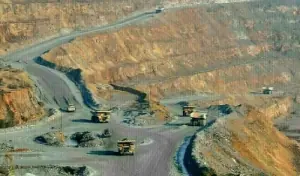


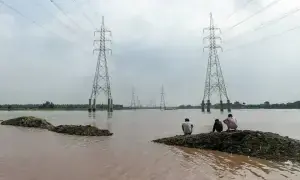







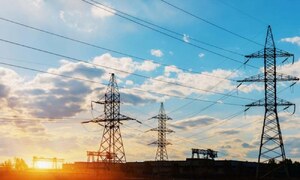
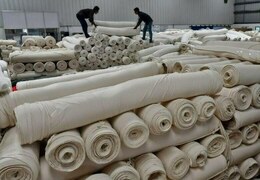
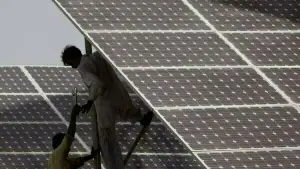






Comments
Comments are closed.